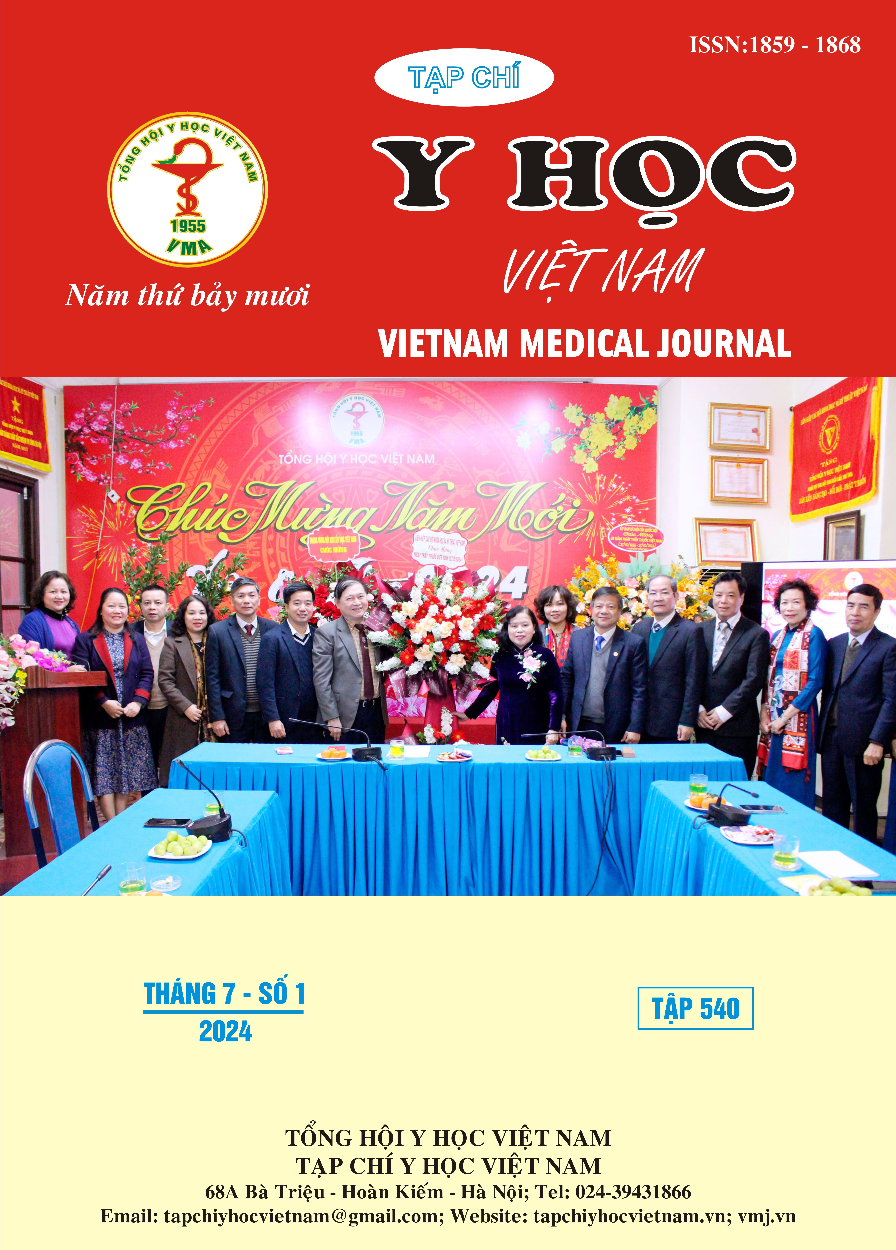STUDY ON THE APPLICATION OF LOCKING SCREW PLATE IN SURGICAL TREATMENT OF FRACTURES OF THE LOWER HEAD OF TIBILE THROUGH MINIMALLY INVASIVE INSECTION
Main Article Content
Abstract
Fracture distal tibia can be treated by open reduction and internal fixation, external fixation, conservation… The treatment of this fracture using minimally invasive plate osteosynthesis (MIPO) minimizes vascular damage, stable fixation, early motion post-operation so it helps decrease infection and non-union. From January /2021 to April /2024, there were 30 patients were performed by the method in Trauma Department of the 19-8 Hospital. The results of correction of fractures according to Larson and Bostman's criteria (n=30) The rate of anatomical fracture correction was very good and good was 29/30 patients (96.6%). 1/30 patients (3.4%) corrected the average result and there were no cases that could not be corrected. Rehabilitation results according to the classification of Johner and Wruhs (n=30): 25/30(83.3%) very good, 4/30 (13.4%) good. 1/30 (3.3%) have average rehabilitation results
Article Details
Keywords
Distal tibial fracture, MIPO, locking compression plate
References
2. Helfet DL, Shonnard PY, Levine D, Borrelli J Jr (1997). “Minimally invasive plate osteosynthesis of distal fractures of the tibia”..
3. J.J.Guo, N.Tang, H.L.Yang, T.S.Tang (2010). ”A prospective, randomised trial comparing closed intramedullary nailing with percutaneous plating in the treatment of distal metaphyseal fractures of the tibia”. J Bone Joint Surg [Br], Vol92-B, pp 984-988.
4. Sakaki MH, Crocci AT, Zumiotti AV (2007), “Comparative study of the locked intramedullary nail and Ender pins in the treatment of tibial diaphyseal fractures”. CLINICS.;62(4): pp455-464.
5. Oh CW, Kyung HS, Park IH, Distal tibia metaphyseal fractures treated by percutaneous plate osteosynthesis. Clin Orthop 2003;408:286-695
6. Rakesh K. Gupta & Rajesh Kumar Rohilla & Kapil Sangwan & Vijendra Singh & Saurav Walia (2010). “Locking plate fixation in distal metaphyseal tibial fractures: series of 79 patients”. International Orthopaedics (SICOT) 34:pp 1285–1290.
7. Mario Ronga, Umile Giuseppe Longo, Nicola Maffulli, MS, (2010). “Minimally Invasive Locked Plating of Distal Tibia Fractures is Safe and Effective”, Clin OrthopRelatRes468: pp 975–982
8. Mario Ronga, Chezhiyan Shanmugam, Umile Giuseppe Longo, Francesco Olive, Nicola Maffulli, (2009). “Minimally Invasive Osteosynthesis of Distal Tibial Fractures Using Locking Plates”. Orthop Clin NAm40, pp499–504.
9. Cheng W, Li, Manyi, comparison study of two surgical options for distal tibia fracture-minimally invasive plate osteosynthesis vs. open reduction and internal fixation. Int Orthop, 2011; May; 35(5):737-42
10. Paluvadi SV, Lal H, Mittal D, et al., Managemen of fractures of the distal third tibia by minimally invasive plate osteosynthesis, A prospective series of 50 patients. Journal of clinical Orthopaedics and trauma. 2014; 5(3)129-136


